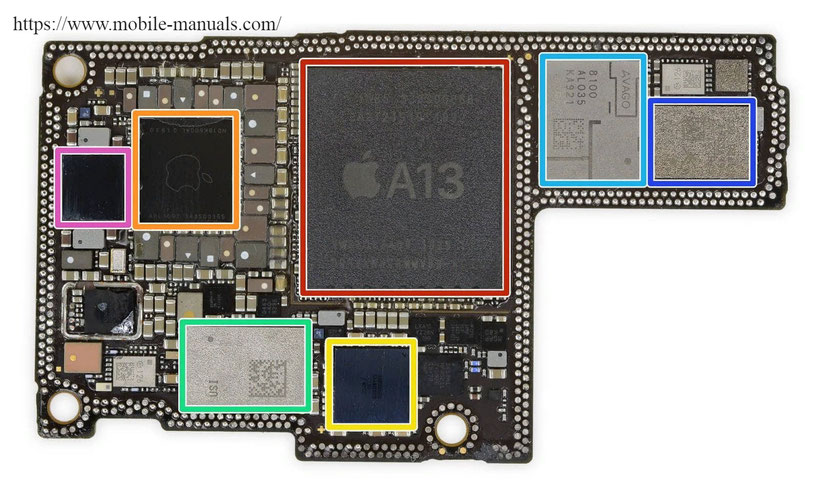
iPhone 11 Schematics
- Apple APL1W85 A13 Bionic SoC layered on SK Hynix H9HKNNNCRMMVDR-NEH LPDDR4X (similar to 4GB SK Hynix)
- Apple APL1092 343S00355 PMIC
- Audio Codec Cirrus Logic 338S00509
- An unidentified USI package is a possible candidate for the U1 ultra-wideband chip, but that's not accurate.
- Avago 8100 Mid / High Band PAMiD
- Skyworks 78221-17 low-frequency PAMiD
- STMicrolectronics STB601A0N Power Management ICs
Now go to the second side of the board and here is what we see:
- Apple / USI 339S00648 Wi-Fi / Bluetooth SoC
- Intel X927YD2Q Modem
- Intel Transceiver 5765 P10 A15 08B13 H1925
- Skyworks 78223-17 PAM
- 81013 - Tracking Qorvo envelopes
- Skyworks 13797-19 DRx
- Intel 6840 P10 409 H1924 with bandwidth PMIC
And move on to the last, but no less important upper part of the board:
- Toshiba TSB 4226VE9461CHNA1 1927 64GB flash drive
Apple claims that with its improved heat dissipation design, the iPhone Pro has “the best sustained performance in iPhone history.”
This is achieved by removing heat from the motherboard through several layers of graphite, where it is dissipated on the back of the case.
It may not seem as bizarre as the liquid cooling systems that we saw on some Android phones, but it certainly should be enough to keep the Apple A13 processor cool, without interfering with the incoming signals to the RF board or from her.



